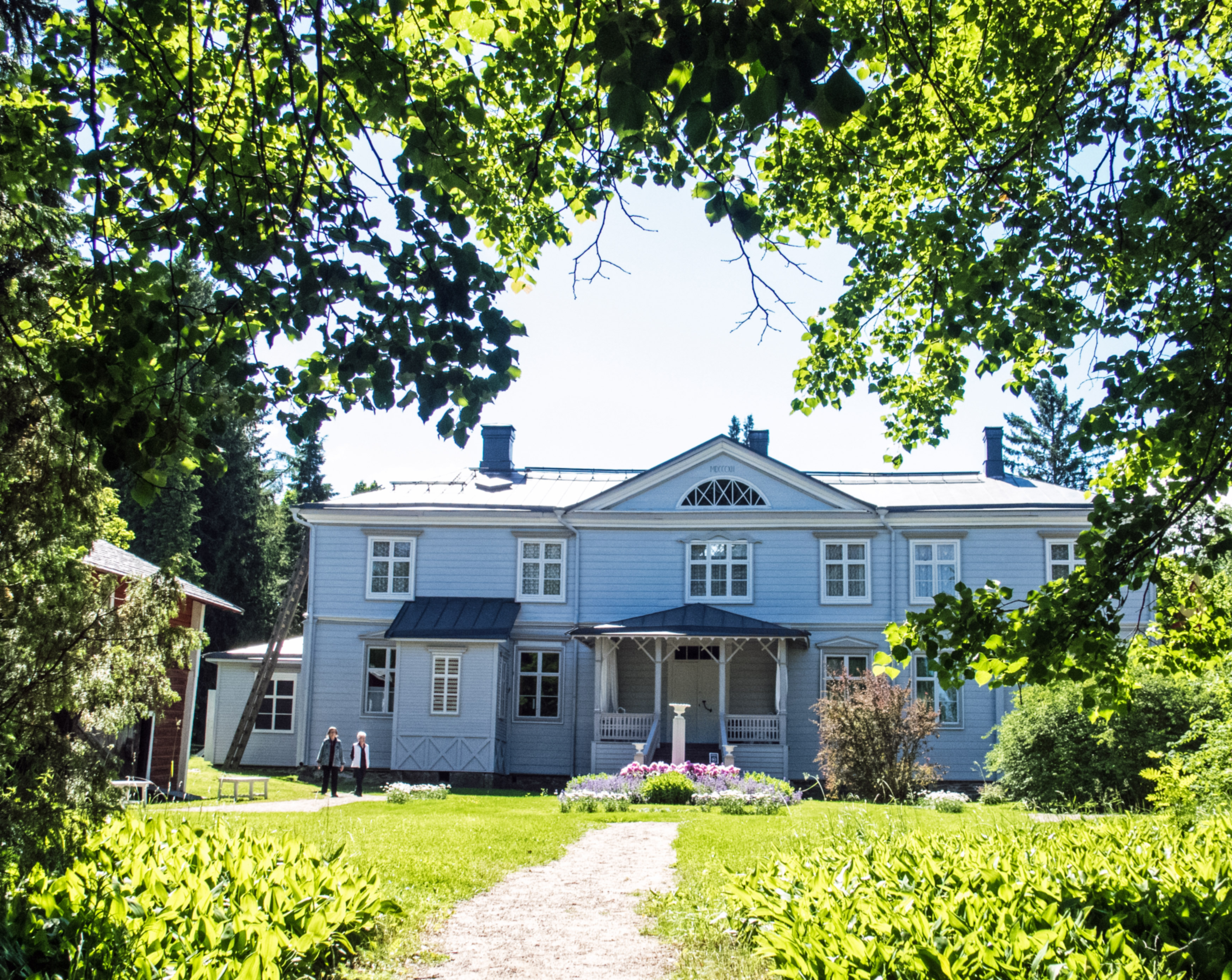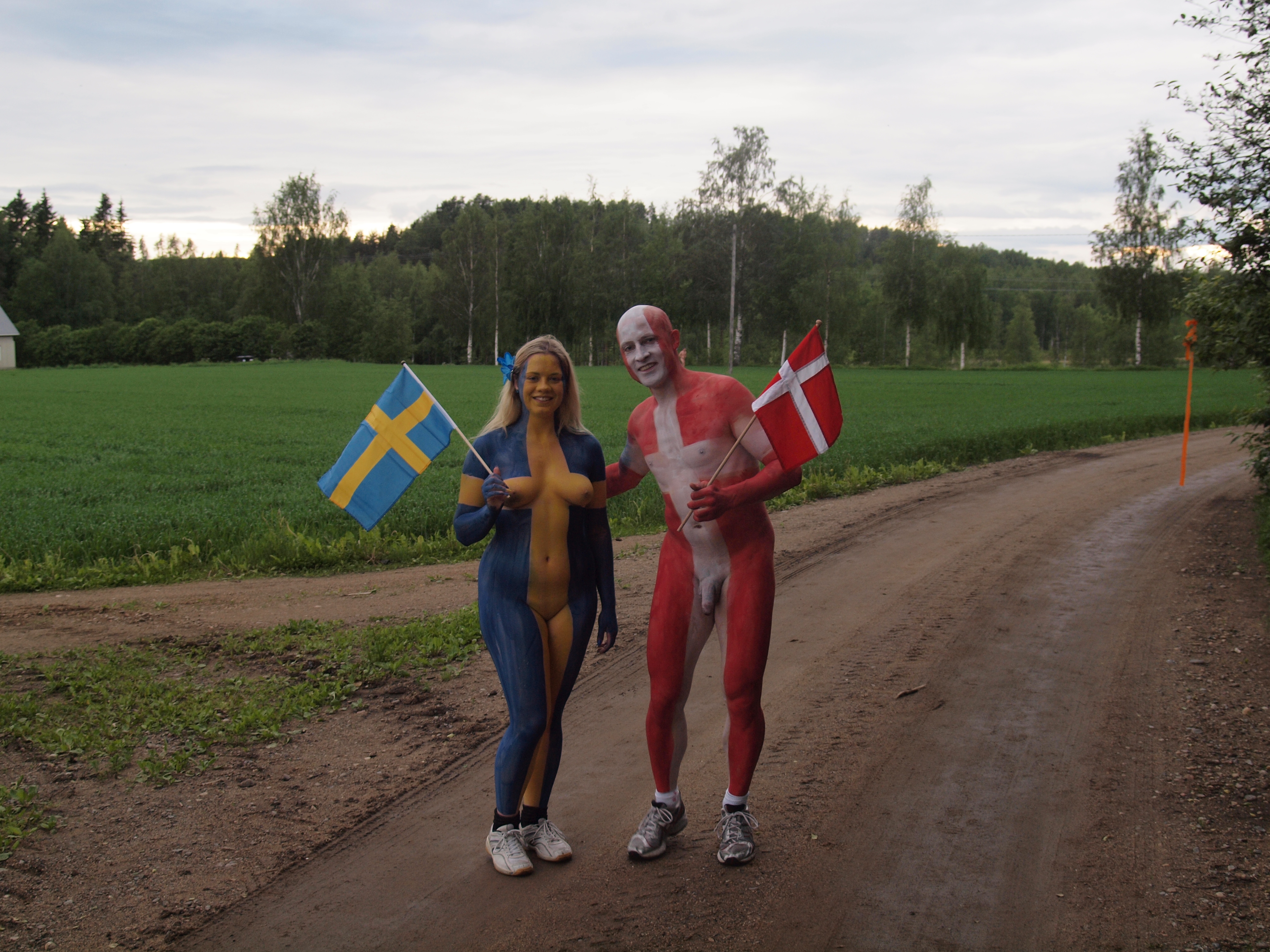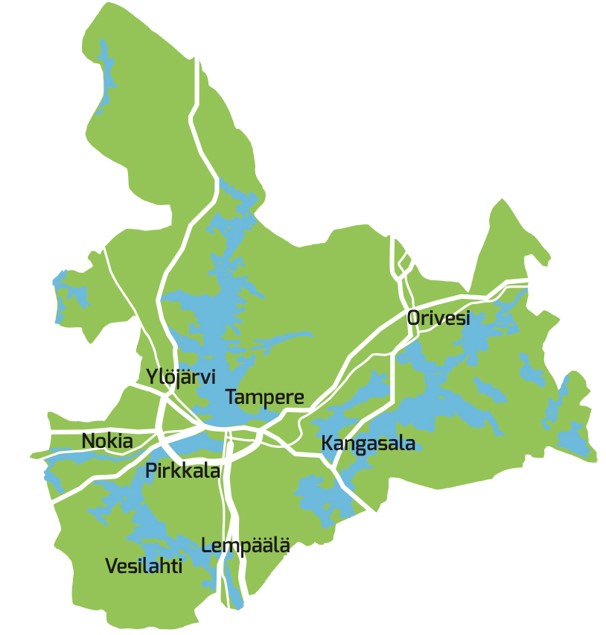|
Padasjoki
Padasjoki () is a municipality of Finland. It is located in the province of Southern Finland and is part of the Päijänne Tavastia region. It is from Padasjoki to Lahti and to Heinola. The municipality has a population of () and covers an area of of which is water. The population density is . The municipality is unilingually Finnish. Padasjoki is known as a summer cottage municipality. By number, it has more holiday homes than permanent residents. History The earliest information on the administrative parish of Padasjoki is from 1442. Most of the villages of Padasjoki were established during the Middle Ages, being mentioned in sources from the 15th century. In 2020, Padasjoki was the setting of a video and choral tribute by the YL Male Voice Choir to the song ''Pohjois-Karjala'', by Leevi and the Leavings and Gösta Sundqvist. The video, seen over 100,000 times in a single day, credits the city of Padasjoki as well as some local businesses and features several rural view ... [...More Info...] [...Related Items...] OR: [Wikipedia] [Google] [Baidu] |
Enni Id
Enni Id (30 January 1904 Padasjoki – 4 April 1992 Padasjoki) was a Finnish self-taught painter. Her art is defined as naïve art. Id only began painting at an older age after the death of her husband Edvard Id in 1966. Enni Id painted with oil paints, mostly on the hardboard base. In her paintings, she depicted traditional rural life, cat themes, and floral arrangements. She also painted the interior walls and furniture of her home cottage in Seitniemi, Padasjoki. These painting feature cats peeking out in the middle of floral patterns and leaf ornaments. Her cabin is preserved and maintained by Kellosalmi-Seitniemi-Virmaila village association. The cabin is open for visitors during summertime. Art exhibitions Id's works were first exhibited at the 1973 Helsinki Art Hall's exhibition of naive art. Thanks to the exhibition, she became more widely known and gained visibility. Later she participated in group and solo exhibitions in Finland, and also the Nordic Naive Exhibition in ... [...More Info...] [...Related Items...] OR: [Wikipedia] [Google] [Baidu] |
Tuomastornit Observation Towers
Tuomastornit is an observation tower located in Padasjoki, Finland. The observation is about 14 meters tall and it was completed in 2013. The tower is built mainly of glued laminated timber which ensures it can endure large number of visitors. The observation tower has two parts: lower Pikku-Tuomas (little Tuomas) and taller Iso-Tuomas (Big Tuomas). Tuomas Tuomas is a male given name common in Finland. It is the Finnish version of the name Thomas. Common variations of Tuomas in Finland include Tuomo, Toomas, Tomas and Thoma. The nameday is the 21st of December. As of 2013 there are more than 32,000 pe ... is a male given name common in Finland. It is the Finnish version of the name Thomas. External links Tuomastornit observation tower, Tripadvisor References Towers completed in 2013 Buildings and structures in Päijät-Häme Observation towers in Finland Tourist attractions in Päijät-Häme {{Finland-struct-stub ... [...More Info...] [...Related Items...] OR: [Wikipedia] [Google] [Baidu] |
Sysmä
Sysmä () is a municipality of Finland. It is situated in the Päijät-Häme region. The municipality has a population of () and covers an area of of which is water. The population density is . Neighbouring municipalities are Asikkala, Hartola, Heinola, Kuhmoinen, Luhanka, and Padasjoki. The municipality is unilingually Finnish. Itä-Häme newspaper is established in Sysmä. According to historians, the word ''sysmä'' means either a "dark forest" or an "uninhabited wilderness." Sysmä is also a lake in Joroinen and another lake in Ilomantsi. History The first settlers in the area came from Sääksmäki, as evidenced by village names such as Voipala in Sysmä, which is named after Voipaala in Sääksmäki. Rapala may also be named after Rapola. Sysmä was first mentioned in 1442, when it was already a separate parish. Jämsä was separated from it on the same year. Sysmä was a large parish, though most of its northern lands lacked a permanent population. The northern ... [...More Info...] [...Related Items...] OR: [Wikipedia] [Google] [Baidu] |
Kuhmoinen
Kuhmoinen ( sv, Kuhmois) is a municipality of Finland, in Pirkanmaa region, but until 2021, it was part of the Central Finland region. The municipality is home to inhabitants. Neighbour municipalities are Jämsä, Kangasala, Luhanka, Orivesi, Padasjoki and Sysmä. The municipality is unilingually Finnish. Nature There are all together even 316 lakes in Kuhmoinen. Kuhmoinen lies on the west coast of Lake Päijänne. Biggest lakes in Kuhmoinen after Päijänne are Vehkajärvi and Isojärvi. Isojärvi National Park resides in Kuhmoinen on the south side of Lake Isojärvi. History Kuhmoinen was established in the medieval times. It was first mentioned in 1483 as ''Kuchmois''. At the time, it was a part of the Padasjoki parish and a center of a fourth (''neljänneskunta'') within the parish. Twinnings * Puhja Parish, Estonia People born in Kuhmoinen *Robert Ruohtula (1853 – 1914) *Joel Naaralainen (1867 – 1915) Gallery File:Asejavarusmuseo.jpg, A military museum in Kuhmo ... [...More Info...] [...Related Items...] OR: [Wikipedia] [Google] [Baidu] |
Hämeenlinna
Hämeenlinna (; sv, Tavastehus; krl, Hämienlinna; la, Tavastum or ''Croneburgum'') is a city and municipality of about inhabitants in the heart of the historical province of Tavastia and the modern province of Kanta-Häme in the south of Finland. Hämeenlinna is the oldest inland city of Finland and was one of the most important Finnish cities until the 19th century. It remains an important regional center. The medieval Häme Castle (also ''Tavastia Castle''; fi, Hämeen linna) is located in the city. Hämeenlinna is known as the birthplace of Finnish national composer Jean Sibelius. Today, it belongs to the region of Tavastia Proper (Kanta-Häme), and before 2010 it was the residence city for the Governor of the province of Southern Finland. Nearby cities include the capital Helsinki (), Tampere () and Lahti (), the regional center of Päijänne Tavastia (Päijät-Häme). The neighboring municipalities of Hämeenlinna are Akaa, Asikkala, Hattula, Hausjärvi, Hollola, ... [...More Info...] [...Related Items...] OR: [Wikipedia] [Google] [Baidu] |
Asikkala
Asikkala () is a municipality of Finland. Its seat is in Vääksy, at the shores of the Lake Päijänne. It is located in the province of Southern Finland and is part of the Päijänne Tavastia region. Asikkala's neighboring municipalities are Hämeenlinna, Heinola, Hollola, Lahti, Padasjoki and Sysmä. The municipality has a population of () and covers an area of of which is water. The population density is . The municipality is unilingually Finnish, by law since 1996. History The oldest prehistoric objects discovered in Asikkala, primarily tools, are presumed to date back to approximately 3000 BCE. The island of Kotasaari in the village of Kalkkinen has been a significant source of finds as well; the settlement on the island dates back to the Stone Age. In the Middle Age, the hunters populating the area of Asikkala made excursions towards the north on the Päijänne. The oldest villages in the municipality are presumed to be Kalkkinen as well as Anianpelto, the former o ... [...More Info...] [...Related Items...] OR: [Wikipedia] [Google] [Baidu] |
Pälkäne
Pälkäne () is a municipality of Finland. It is part of the Pirkanmaa region. The municipality has a population of () and covers an area of of which . The population density is . Onkkaala is the administrative center of the municipality. Tampere is located northwest of the center of Pälkäne. The municipality is unilingually Finnish. Many people from Helsinki and the surrounding cities own summer cottages and residences in Pälkäne, making the small town very busy during summer vacation seasons. Pälkäne is a very popular summer vacation resort given its diverse services, high-quality swimming beach, beautiful nature and close location to big cities. From start of year 2007 Pälkäne and Luopioinen were merged to a new municipality of Pälkäne. Geography Nature The landscape of Pälkäne is dominated by several lakes, the largest of which are Lake Mallasvesi on the west side of Onkkaala and Lake Pälkänevesi on its east side, as well as Lake Roine on the Kangasala sid ... [...More Info...] [...Related Items...] OR: [Wikipedia] [Google] [Baidu] |
Southern Finland
Southern Finland ( fi, Etelä-Suomen lääni, sv, Södra Finlands län) was a province of Finland from 1997 to 2009. It bordered the provinces of Western Finland and Eastern Finland. It also bordered the Gulf of Finland and Russia. History On September 1, 1997 the Uusimaa Province, the Kymi Province and the southern parts of the Häme Province were joined to form the new Southern Finland Province. All the provinces of Finland were abolished on January 1, 2010. Administration The State Provincial Office was a joint regional authority of seven different ministries. It promoted national and regional objectives of the State central administration. The State Provincial Office of Southern Finland employed about 380 persons. Its service offices were located in the cities of Hämeenlinna, Helsinki, and Kouvola. The administrative seat was placed at Hämeenlinna. Regions Southern Finland was divided into six regions: *South Karelia (''Etelä-Karjala / Södra Karelen'') * Päi ... [...More Info...] [...Related Items...] OR: [Wikipedia] [Google] [Baidu] |
Nakukymppi
Nakukymppi is a nude sport event in Finland, held in the municipality of Padasjoki one week before Midsummer every year. Participants run or walk either 10 kilometres or a full marathon naked. Participants tend to wear only shoes, socks and headwear. Women wear a top if their breasts are shaking too much. It has been held annually since 2003. It usually draws about 100 to 150 participants, of which one-tenth to one-fifth are women. Even though the event isn't organised by naturists and not only for naturists, half of the participants are naturists. The event is organized by Aarne Heino together with local village community. See also * World Naked Bike Ride * List of clothing-free events The following is a list of nude events (clothing-free events) where people can be naked in public: Generic events * Naked party * Nude wedding Specific events * Burning Man * Fusion Festival * Miss and Mr. Nude America * Naked Pumpkin Ru ... References External links Official site ... [...More Info...] [...Related Items...] OR: [Wikipedia] [Google] [Baidu] |
Pohjois-Karjala
North Karelia ( fi, Pohjois-Karjala; sv, Norra Karelen) is a region in eastern Finland. It borders the regions of Kainuu, North Savo, South Savo and South Karelia, as well as Russia's Republic of Karelia. It is the easternmost region of Finland and shares a border with Russia. The city of Joensuu is the capital and the largest settlement of the region. North Karelia has successfully reduced chronic diseases through public health measures. In the 1960s Finland led industrialized nations in heart disease mortality rates; North Karelia had Finland's highest incidence. In 1972 a long-term project was undertaken which targeted this risk in North Karelia. The resulting improvement in public health is still considered remarkable, a model for the rest of the nation. North Karelia is also known as the most sociable region in Finland. Historical province Municipalities The region of North Karelia is made up of 13 municipalities, of which five have city status (marked in bold). ... [...More Info...] [...Related Items...] OR: [Wikipedia] [Google] [Baidu] |
Kanta-Häme
Kanta-Häme (), sometimes referred to by the obsolete Tavastia Proper ( sv, Egentliga Tavastland) or as the Häme region, is a region ( / ) of Finland. It borders the regions of Southwest Finland, Pirkanmaa, Päijät-Häme, and Uusimaa. Hämeenlinna is the largest urban area in the region. There are two other municipalities that have township status: Riihimäki and Forssa. Historical provinces The region of Kanta-Häme has been inhabited since the Stone Age. The first written mention of the historical Tavastia province is found in the Chronicle Of Novgorod, in reference to a military campaign launched by Prince Vladimir in 1042. The region had been ruled by the Swedes since the late 13th century, when Birger Jarl led the Second Crusade against the inhabitants of historical Tavastia province. In the 14th century, Häme became a fiefdom, whose administrative seat was Häme Castle. When Finland was taken from Sweden by the Russians in 1809, Tavastia proper also became part of the ... [...More Info...] [...Related Items...] OR: [Wikipedia] [Google] [Baidu] |
Pirkanmaa
Pirkanmaa (; sv, Birkaland; la, Birkaria, link=no), also known as ''Tampere Region'' in government documents, is a region of Finland. It borders the regions of Satakunta, South Ostrobothnia, Central Finland, Päijät-Häme, Kanta-Häme and Southwest Finland. Most of the water area in the Kokemäki River watershed is located in the Pirkanmaa region, although Lake Vanajavesi is partly in the Kanta-Häme region. The region got its name from Pirkkala, which in the Middle Ages comprised most of present-day Pirkanmaa. Tampere is the regional center and capital of Pirkanmaa, and at the same time the largest city in the region. The total population of Pirkanmaa was 529,100 on 30 June 2022, which makes it the second largest among Finland's regions after Uusimaa. The population density is well over twice the Finnish average, and most of its population is largely concentrated in the Tampere sub-region. Economy The Gross domestic product (GDP) of the region was 18.3 billion € in 2016 ... [...More Info...] [...Related Items...] OR: [Wikipedia] [Google] [Baidu] |







